From the fancy dress import kilts that you see on Edinburgh’s historic Royal Mile, which are now also starting to appear around the International Scottish highland games. To the kilts redesigned for genuine reasons and also the modern takes on the kilt that still show great respect to the original garment. Scottish Kilts made by kiltmakers really are taking over the world.
I am not going to waste your time telling you about the fancy dress imported kilts, sold as traditional kilts on Edinburgh’s Royal Mile, I think most folk will know instantly that if its costing less than £50 there’s something not quite right. Yes there is a tourist market for these, however, as a traditionally trained kiltmaker who puts her heart and soul into every kilt she makes I feel like its a massive damaging insult. That is all I will say about that.
Anyhoo….
You may see a lot of the Sport Kilts around Scottish festivals especially in the United States, there is a very good reason for this and it is one of the main reasons it was designed. A lot of athletes go along to the games just wanting to compete but unfortunately some do not have kilts and to enter, you must wear one. Light Bulb moment, in 1995 the Company Sport Kilt, from California, designed a casual kilt using alternative fabrics, less material and washable. It has Velcro fastenings and sometimes elastic in the waistband, perfect for the athlete to throw on just before the competition. It has been so successful that it has the backing of the Scottish American Athletic Association.
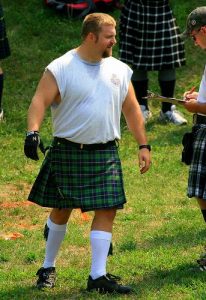
Don’t get me started on these folk that wear them for formal occasions though grrrrrrr.
I have to admit this was an amazing idea and fills a well needed vacuum but, c’mon there’s nothing like watching a real kilt swing round as an athlete throws the stone putt. Who’s with me?
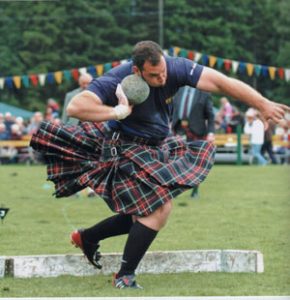
Another variation of the kilt came out in 1999 by Steven Villegas, a Seattle clothier, it is the Utilitkilt. This was marketed as a comfortable alternative to wearing trousers when working. They can be made from cotton, leather and lightweight nylon. They have pockets to keep your manly tools and give plenty of air conditioning. However, gonnae no go up ladders in them. This again has been very popular in the United States and has not quite taken off here in Scotland.
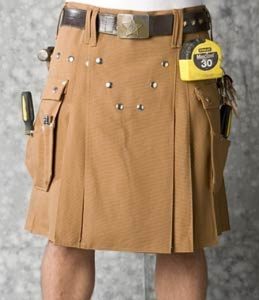
We then have ’21st Century kilts’ who have brought us innovative ideas for kilt designs, started by Howie Nicolsby in 1996, he has created a style of kilt that not only has the modern feel but also respects the traditional Scottish style of the kilt at the same time. He too uses different fabrics ranging from leather, denim or even pin stripe ( as a kilt suit this looks amazing) and the traditional tartan. It is a nice alternative to a traditional kilt and is made right here in Scotland.
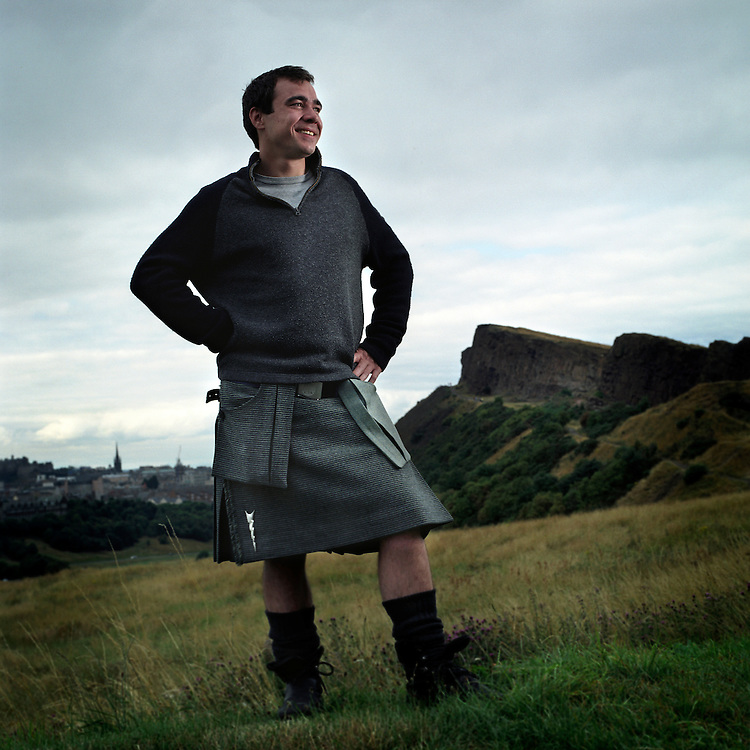
These are all great ideas but nothing compares to a completely bespoke traditionally handsewn Scottish Kilt. The whole fit, swing and history of the Scottish kilt will never go out of fashion and to make sure of this we have made it our personal goal that this art will never die out. It can take between 16 – 20 hours to make a single kilt and every kiltmaker I know puts their blood, sweat and tears (not literally *cough cough*) into a single kilt. It was a dying art because of poor wages, single minded retailers who think anyone who wants to sew is not very bright so will get what they’re given and an ageing population of kiltmakers. Now with the internet and the world seeming to get smaller we can talk to like minded individuals, kiltmakers who have been working alone at home can now talk to one another about their experiences. We have even set up a Kiltmakery that is open to any kiltmaker to come in and sew or join in with the hilarity….. I mean work with other professional kiltmakers, *cough cough* (think i must be getting a cold) We are so proud to now have a community of kiltmakers and with training new kiltmakers, we are way ahead of our goal.
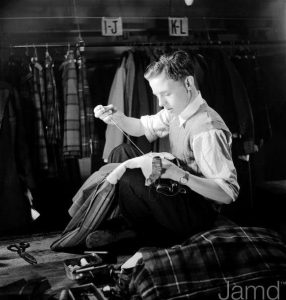 |
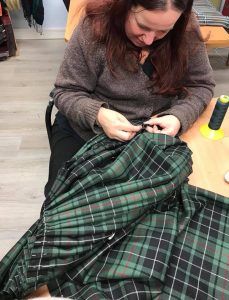 |
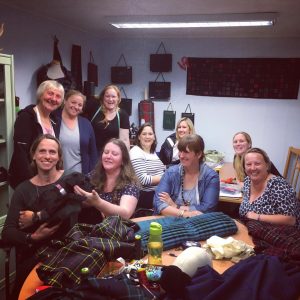 |
The Traditional Scottish kilt will last a lifetime, more even, I have altered kilts from the 1940s. In this throw away society isn’t it nice to know that you will have one piece of clothing that will grow, or shrink, with you through the years and can pass on to the next generation. You only have to look at the amount of suits or pairs of trousers you buy in a lifetime to know that buying a traditionally made Scottish kilt is truly an investment.

You never know if buy one from us, I might even be the one making it for you 😉

It is indeed a wonderful service that you provide to both the community and also to the world at large…Thanks you so much!
Thank you so much for your upholding of the traditional kilt and its making. I am an American of Scottish descent and am excitedly awaiting the arrival from the Home Country of my first kilt in my Clan’s tartan (Farquharson). Please pass along to all of the dedicated kiltmakers that you may know my heartfelt thanks.
I solute you I have worn the traditional kilt all o f my dancing and piping life
I know supply kilts made traditionally from Scotland for clients. We face the difficulty of not having kiktmakers here ir at least traditionally trained ones therefore the quality is poor. Are there creditable kilt making courses available for overseas students?